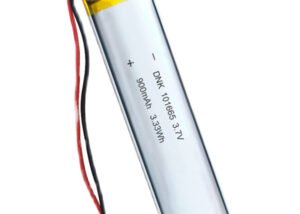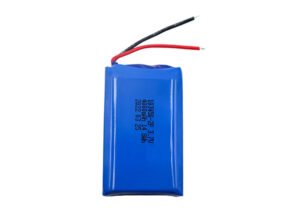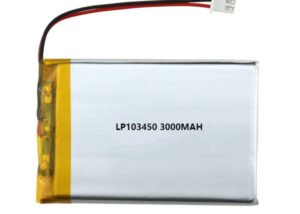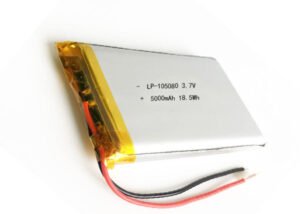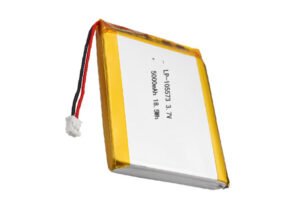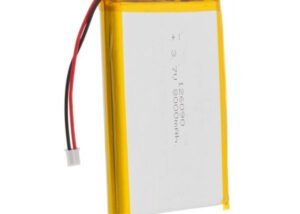Lithium Polymer Battery in Metering Equipment
Lithium Polymer Battery (LiPo) is a rechargeable battery that has gained popularity in recent years due to its high energy density, low self-discharge rate, and long lifespan. LiPo batteries are widely used in various industries, including the metering industry, where they serve as a reliable power source for various equipment, such as smart meters, energy storage systems, and portable measurement devices. This article aims to explore the advantages, applications, challenges, and solutions of using LiPo batteries in metering.
Advantages of Lithium Polymer Battery in Metering
LiPo batteries offer several advantages over traditional batteries, making them an ideal choice for metering applications. These advantages include:
HIGH ENERGY DENSITY: LiPo batteries have a higher energy density than other battery types, such as nickel-cadmium (NiCad) and nickel-metal hydride (NiMH) batteries. This means they can store more energy in a smaller and lighter package, making them ideal for portable measurement devices.
LOW SELF DISCHARGE RATE: LiPo batteries have a lower self-discharge rate than other battery types, which means they retain their charge for a longer period. This is particularly useful for equipment that is not used frequently, such as data loggers.
LONG LIFESPAN: LiPo batteries have a longer lifespan than other battery types. They can last for several years, even with frequent use, making them a cost-effective option for smart metering and energy storage systems.
LIGHTWEIGHT AND COMPACT DESIGN: LiPo batteries are designed to be lightweight and compact, making them ideal for portable equipment and devices. They also have a flexible form factor, which allows them to be shaped to fit the specific requirements of the equipment they power.
HIGH DISCHARGE RATE: LiPo batteries can deliver a high discharge rate, making them ideal for applications where a sudden surge of power is required, such as in smart meters.
Applications of Lithium Polymer Battery in Metering
LiPo batteries are used in various metering applications, including:
- Smart metering: LiPo batteries are used to power smart meters, which provide real-time information on energy consumption. Smart meters require a reliable power source to function correctly, and LiPo batteries offer a cost-effective and efficient solution.
- Energy storage systems: LiPo batteries are used in energy storage systems, which store excess energy generated by renewable sources, such as solar panels and wind turbines. LiPo batteries are ideal for these applications due to their high energy density and long lifespan.
- Data loggers: LiPo batteries are used to power data loggers, which are used to collect and store data on various environmental factors, such as temperature, humidity, and air quality. LiPo batteries offer a low self-discharge rate, allowing data loggers to operate for extended periods without requiring frequent battery replacement.
- Portable measurement devices: LiPo batteries are used to power portable measurement devices, such as handheld multimeters and oscilloscopes. LiPo batteries’ lightweight and compact design make them ideal for these applications, as they can be easily carried from one location to another.
Challenges and Solutions in Using Lithium Polymer Battery in Metering
While LiPo batteries offer several advantages, they also present some challenges, which must be addressed to ensure their safe and efficient use in metering applications. These challenges include:
SAFETY CONCERNS: LiPo batteries can be dangerous if not handled correctly. They can catch fire or explode if they are overcharged, short-circuited, or punctured. To mitigate these risks, LiPo batteries must be handled and stored properly, and the equipment they power must be designed to prevent overcharging and over-discharging.
TEMPERATURE SENSITIVITY: LiPo batteries are sensitive to temperature changes. High temperatures can cause LiPo batteries to degrade faster, reducing their lifespan. Low temperatures can also affect their performance, reducing their capacity and discharge rate. To ensure optimal performance, LiPo batteries must be operated within their recommended temperature range.
OVERCHARGING AND OVER-DISCHARGING: Overcharging and over-discharging can damage LiPo batteries, reducing their lifespan and increasing the risk of fire or explosion. To prevent overcharging and over-discharging, LiPo batteries must be charged and discharged using the correct voltage and current levels.
PROPER HANDLING AND TRANSPORTATION: LiPo batteries must be handled and transported correctly to prevent damage or accidents. They should be stored in a cool, dry place, away from flammable materials and direct sunlight. When transporting LiPo batteries, they should be placed in a fireproof container and kept away from heat sources and sharp objects.
All in all, LiPo batteries offer several advantages for metering applications, including high energy density, low self-discharge rate, long lifespan, lightweight and compact design, and high discharge rate. They are used in various metering applications, such as smart metering, energy storage systems, data loggers, and portable measurement devices. However, LiPo batteries also present some challenges that must be addressed to ensure their safe and efficient use, such as safety concerns, temperature sensitivity, overcharging and over-discharging, and proper handling and transportation. As LiPo battery technology continues to develop, we can expect to see further improvements in their performance and safety, making them an even more attractive option for metering applications.


